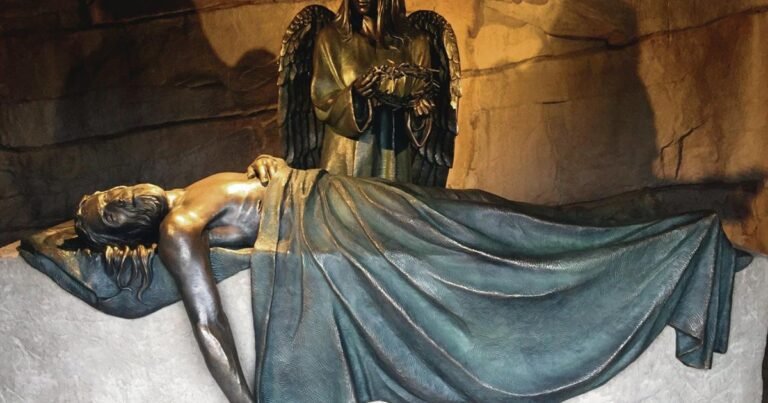For sculptor Lynn Kircher, a regular on the Rio Costilla Studio Tour, allowing his passions to lead him opened door after door. Ultimately, in 2018, he found himself orchestrating a team of nine other sculptors, each with their own team, to create 60 larger than life-size bronzes of the Stations of the Cross for the Cloisters on the Platte in Nebraska.
From the time as a young boy that he gravitated toward a box of crayons he spied on a windowsill until the present moment when, as an accomplished sculptor, he is still exploring the depth of the stories that have always attracted him, Kircher has been blessed with occurrences that are as happy as they might be unexpected. At the same time, though, Kircher seems to possess an uncanny instinct which results in success for whatever project he has in mind.
Kircher relates this story: “When I was 15, my parents smoked, as most parents did in that day, and they had matches, and inside one of the match covers it said, ‘Draw me.’ It was a picture of a pirate. So, I drew it bigger, sent it in and ended up with a full scholarship to Minneapolis School of Art Correspondence School.”
At 17, Kircher found himself working the radar station on a ship during the Vietnam War and, yet, because of his superior officer, he still ended up with a place to draw. After the Navy, Kircher applied to and was accepted at various art schools, thanks to the portfolio he built up from the Minneapolis School of Art. He ended up at the Colorado Institute of Art, not only attending there, but teaching life drawing at the institute for 19 years.
These serendipitous events, though, ran parallel to another path which opened up for him his life’s artistic work. Before the Cloisters on the Platte pieces, Kircher created over four dozen bronze installations of Mary, Jesus, several saints and angels, commissioned by churches from California to Florida and Canada.
This path started with a simple desire to sculpt a crucifix for his mother’s church which was being renovated. He drew up a sketch of the figure he wanted to have cast and made a small miniature of it which he presented to the restoration committee. They not only approved it for the inside of the church, but a second was cast for the outside as well. “So, it was an austere beginning,” says Kircher.
One of Kircher’s bronzes explores the very human face of Jesus, his crown of thorns and with a single tear upon his face. In Cloisters on the Platte, he reaches deep into the story leading up to the Resurrection. Above the body of Jesus, with his arm dangling off the stone slab, an angel stands, holding the prostrate figure in her magnetic gaze.
The commission for Cloisters on the Platte, though, required Kircher to move well beyond his skill as an individual artist. In addition to sculpting figures himself and leading his own team, he had to hold his intention and the intention of the benefactor, Joe Ricketts, in mind: “Mr. Ricketts told me he wanted the best Stations of the Cross in the world.”
In the cost analysis, the timeline and the myriad details of a project of this magnitude, Kircher was aided primarily by his wife, artist Jane Kircher. This commission gave the Kirchers and every artist on each of the teams the opportunity to create art at a level beyond the personal. As Lynn Kircher states speaking about the sculptors he invited, “They had to take their ego hat and hang it on the wall.”
For Kircher, it is not only skill but story which is important; the artist portrays a story and ultimately finds the story resonates within himself. “What I love most about it [art] is that it honors and respects the inner aspect of myself,” Kircher says.
“So, I’ve been living a life of serendipity if you will, by the grace of God. … I’ve let the work create itself in front of me and followed it instead of trying to control it the other way [around].” This attitude, which might best be described as simply going through the door the heart has opened, could be seen as the antithesis to our contemporary impulse to control our direction. For Kircher, this approach has led him “to that special space where creativity happens,” and when creativity happens for Kircher, he sees the universal, the archetypal, within the specific and his viewers may then enter into this larger vision.
The Kirchers’ studios are open during the Rio Costilla Studio Tour Sept. 7-8 and by appointment. His work can be viewed and he can be contacted online at kircherstudios.com.





